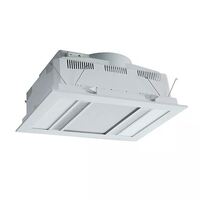
Martec Phoenix 3-in-1 Fan, Heater, Light & Exhaust White
Model # MBHP1000W
Model #
MBHP1000W
$324.50 $295.00 ex GST
Download the MJS App today and get everything you need at your fingertips



Need Help?

Martec Phoenix 3-in-1 Fan, Heater, Light & Exhaust White
Model # MBHP1000W
Model #
MBHP1000W
$324.50 $295.00 ex GST
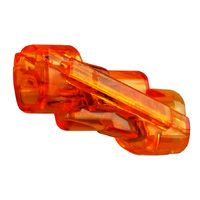
IDEAL Spliceline 2-Port Inline Connector (100 Jar)
Model # 30-1142J
Model #
30-1142J
$38.50 $35.00 ex GST
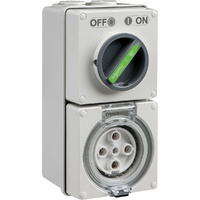
Clipsal Easy56 Round 5 Pin 32A Switched Socket
Model # EY56C532
Model #
EY56C532
$134.50 $122.27 ex GST
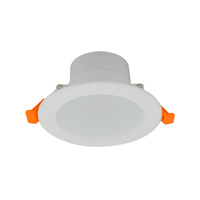
Tradelike BUDDY 10W Non-Dimmable LED Downlight Kit 4000K
Model # TLBU4010W
Model #
TLBU4010W
$4.95 $4.50 ex GST

Clipsal Wiser Smart Smoke Alarm with 10 Year Lithium Battery White
Model # CLP599WSAL
Model #
CLP599WSAL
$152.90 $139.00 ex GST
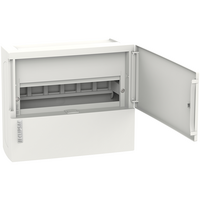
Clipsal Resi MAX 1 Row 12 Pole Surface Mount Switchboard
Model # RMXE112S
Model #
RMXE112S
$46.20 $42.00 ex GST

Point Pod Multi Pop Up Powerpoint 3 x Power 2 x USB Silver
Model # PPM01
Model #
PPM01
$490.50 $445.91 ex GST

Matchmaster 03MM-DC21V Digital TV Antenna
Model # 03MM-DC21V
Model #
03MM-DC21V
$137.50 $125.00 ex GST
 Click here to see our huge range
Click here to see our huge range
Date Posted:22 February 2023
Whether you are a professional tradesman about to take on a large-scale project or a DIY enthusiast looking to make savings by doing your cabling, the world of cables can sometimes feel quite daunting. From coaxial cables to data cables and flat TPS cables, there are so many options available to choose from that it is easy to feel confused. Each type of cable is designed for a particular purpose, and understanding the differences can make your experience with a cabling project more successful.
To help you along the way, we’ve created a simple guide to cabling. We’ll start by explaining why it is important to understand the functions of different types of cabling, before providing an overview of the main types of cable you are likely to encounter. Hopefully, with this information in hand, you should be able to find the perfect match for your cabling needs.

In today’s world, we rely heavily on technology, and cables are crucial. Cables are used to transmit data, connect devices and power appliances in our homes and workplaces. However, different cables have unique characteristics which make them suitable for a particular purpose. So, if you plan on working with any type of cable, it is worth understanding the difference between cable types for the sake of safety, to improve your experience, and avoid unnecessary delays and additional costs in the long run.
Safety first, as they say. Safety is paramount when it comes to cables, and it’s essential to know the difference between cable types to avoid potential hazards. For instance, using an instrumentation cable instead of an orange circular cable for high-voltage applications can be dangerous and lead to an electrical disaster. Therefore, understanding the electrical requirements of a particular application is critical when selecting the perfect cable.
As we’ve already established, different cables have particular characteristics that affect their performance and suitability for specific jobs. Selecting the best cable for a particular application will improve your experience and achieve optimal results. For instance, a flexible multicore cable is ideal for projects that require high flexibility and durability, such as robotics and automation, while a flat TPS cable is more suitable for use in narrow spaces where traditional cables may struggle to fit. Likewise, a data cable is ideal for transmitting digital data, while a coaxial cable is suitable for transmitting high-frequency signals. Therefore, only by selecting the appropriate cable will you be able to enhance the performance of your devices and ensure they are functioning optimally.
Using the wrong cable for a job can cause delays, damage and additional costs. For example, if you used an orange circular cable instead of a flexible multicore cable for a robotics project, you would likely experience some installation issues, resulting in delays and additional expenses. Similarly, using a flat TPS cable instead of a data cable for transmitting digital data could lead to signal loss, data corruption, and other performance issues. Therefore, it makes sense to do your research and know the difference between cable types, so you can avoid such scenarios and save time and money in the long term.
It’s time to get technical and understand the types of cable out there and what they are most suitable for. These are the main types of cables you’ll likely come across.
Coaxial cables are commonly used for cable television, internet and other telecommunications applications. They consist of a central conductor, an insulating layer, a metallic shield and an outer insulating layer. This type of cable is used for transmitting high-frequency signals over long distances with minimal signal loss and interference.
As the name suggests, data cables transmit digital data between devices, such as computers, printers and other electronic devices. These cables typically consist of a series of twisted pairs of copper wires that are shielded to reduce interference and signal loss. Different types of data cables are used for different applications, including ethernet cables for networking; USB cables for connecting peripheral devices; and HDMI cables for transmitting digital audio and video signals.
An instrumentation cable is a type of cable used for transmitting low-frequency signals in industrial and commercial applications. They’re commonly used for measuring and monitoring electrical signals, such as temperature, pressure and flow. These cables typically consist of multiple pairs of copper wires individually shielded to reduce interference and signal loss.
An orange circular cable is commonly used for power distribution in harsh environments. This cable consists of multiple copper wires that are protected by an outer rubber sheath, making it resistant to water, oil and other chemicals. Orange circular cables tend to be used in construction sites, factories and other industrial applications.
Flexible multicore cables are commonly used in robotics and automation, as well as other applications that require high flexibility and durability. A flexible multicore cable is specifically designed to withstand bending and twisting without breaking or damaging the wires inside. So, these cables typically consist of multiple cores of copper wires that are individually insulated and protected by an outer sheath.
Formally known as thermoplastic-sheathed cable, a flat TPS cable is a type of electrical cable commonly used in domestic and commercial wiring installations. There are a few configurations of TPS cable, however the most popular Twin and Earth cable consists of two insulated copper conductors (twin) arranged side by side, with a third insulated copper conductor between them (earth), all encased in a flat, flexible PVC sheath. TPS cables are often used for fixed wiring applications such as lighting, powerpoints and other electrical appliances. They are easy to install and cost-effective.
Now that you know the main types of cable and understand the importance of finding the perfect match for your cabling project, it is time to go shopping. Thankfully, help is at hand when you shop at MJS Electrical Supplies. MJS Electrical Supplies has been providing tools and hardware to the Australian electrical trade for over a decade, so you know you’ll be in good hands when you buy your cables and other electrical items at MJS Electrical Supplies.

Copyright © 2025 MJS Electrical Products & Supplies. All rights reserved



Add your favourites to cart

Select Afterpay at checkout

Log into or create your Afterpay account, with instant approval decision

Your purchase will be split into 4 payments, payable every 2 weeks
All you need to apply is to have a debit or credit card, to be over 18 years of age, and to be a resident of country offering Afterpay
Late fees and additional eligibility criteria apply. The first payment may be due at the time of purchase
For complete terms visit afterpay.com/terms
 .
.